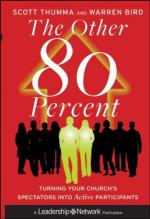[Footnote 11: The ‘Cocoa Tree’ was a Chocolate House in St. James’s Street, used by Tory statesmen and men of fashion as exclusively as ’St. James’s’ Coffee House, in the same street, was used by Whigs of the same class. It afterwards became a Tory club.]
[Footnote 12: Drury Lane had a theatre in Shakespeare’s time, ’the Phoenix,’ called also ‘the Cockpit.’ It was destroyed in 1617 by a Puritan mob, re-built, and occupied again till the stoppage of stage-plays in 1648. In that theatre Marlowe’s ‘Jew of Malta,’ Massinger’s ‘New Way to Pay Old Debts,’ and other pieces of good literature, were first produced. Its players under James I. were ’the Queen’s servants.’ In 1656 Davenant broke through the restriction upon stage-plays, and took actors and musicians to ‘the Cockpit,’ from Aldersgate Street. After the Restoration, Davenant having obtained a patent, occupied, in Portugal Row, the Lincoln’s Inn Theatre, and afterwards one on the site of Dorset House, west of Whitefriars, the last theatre to which people went in boats. Sir William Davenant, under the patronage of the Duke of York, called his the Duke’s Players. Thomas Killigrew then had ‘the Cockpit’ in Drury Lane, his company being that of the King’s Players, and it was Killigrew who, dissatisfied with the old ‘Cockpit,’ opened, in 1663, the first ‘Drury Lane Theatre’, nearly upon the site now occupied by D.L. No. 4. The original theatre, burnt in 1671-2, was rebuilt by Sir Christopher Wren, and opened in 1674 with a Prologue by Dryden. That (D.L. No. 2) was the house visited by ’the Spectator’. It required rebuilding in 1741 (D.L. No. 3); and was burnt down, and again rebuilt, in 1809, as we now have it (D.L. No. 4). There was no Covent Garden Theatre till after ‘the Spectator’s’ time, in 1733, when that house was first opened by Rich, the harlequin, under the patent granted to the Duke’s Company.
In 1711 the other great house was the theatre in the Haymarket, recently built by Sir John Vanbrugh, author of ‘The Provoked Wife,’ and architect of Blenheim. This ‘Haymarket Theatre’, on the site of that known as ’Her Majesty’s,’ was designed and opened by Vanbrugh in 1706, thirty persons of quality having subscribed a hundred pounds each towards the cost of it. He and Congreve were to write the plays, and Betterton was to take charge of their performance. The speculation was a failure; partly because the fields and meadows of the west end of the town cut off the poorer playgoers of the City, who could not afford coach-hire; partly because the house was too large, and its architecture swallowed up the voices of the actors. Vanbrugh and Congreve opened their grand west-end theatre with concession to the new taste of the fashionable for Italian Opera. They began with a translated opera set to Italian music, which ran only for three nights. Sir John Vanbrugh then produced his comedy of ‘The Confederacy,’ with less success than it deserved. In a few months Congreve abandoned his share in the




